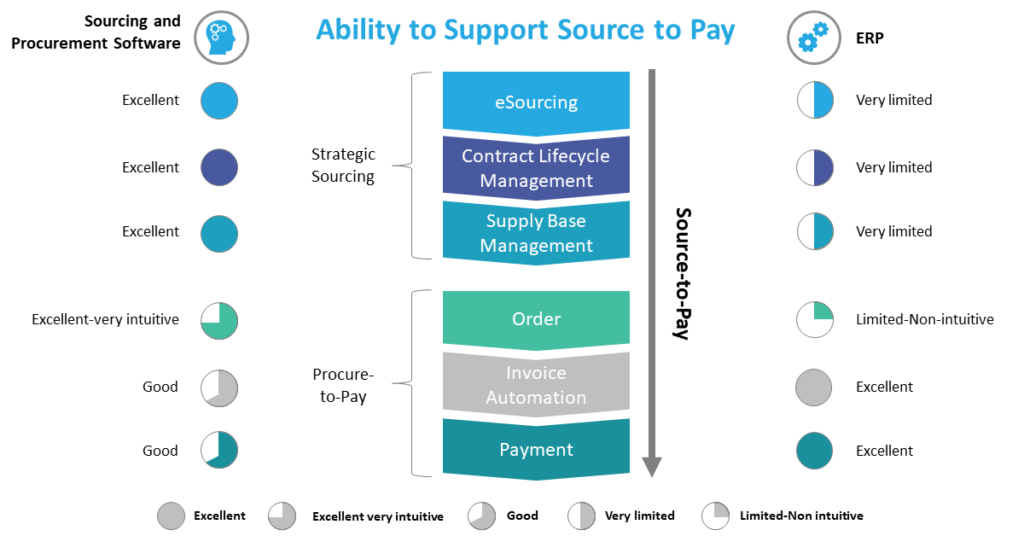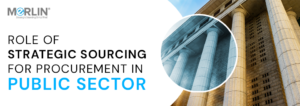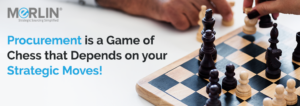We all do agree that ERP systems are absolutely critical for achieving business process efficiency goals and for co-ordination between business functions. One of the main advantages of an ERP is its capability to integrate all business functions in a single platform including Finance, HR, Customer Relations, Supply Chain Management, etc. And there is no doubt it excels in performing these core transactional activities of a business. But, does one size fit all? How good are the features in an ERP when it comes to handling certain business functions in-depth? Sourcing and Procurement is probably one area that often requires a lot of depth and demands functionalities beyond what is available in a typical ERP system. Especially in the current context where Supply Chains have become disrupted and enterprises are looking to stabilize and grow in a very challenging environment. In this blog, we explore how a procurement ERP module differs from a best-of-breed sourcing and procurement solution.
Over the past decade, the market for procurement software has been growing significantly. According to recent market research report, the procurement software market is expected to register a CAGR of 10.2% during the forecast period (2020 to 2025). With an endless list of options to choose from in the procurement software space classified as Source to Pay (S2P) solution, Procure to Pay (P2P) solution and so on, businesses are often left at sea wondering which kind of a procurement solution they need and do they really need these when they already have an ERP?
When it comes to digitization of procurement transactional activities, many procurement professionals still rely on ERPs. We have often come across many customers who ask, why do we even need to consider a strategic sourcing solution when our existing ERP is capable of handling basic purchasing needs. With all the data about spend, suppliers, specifications, and inventory, available in your ERP, it is natural to think that sourcing and procurement is a natural extension of your ERP system. But the truth is it rarely works that way in practice.
In many organizations, procurement and sourcing teams often require a specialty or best-of-breed sourcing application, but it can be difficult to justify if significant investments have already been made in an ERP. Decision makers without prior exposure to such solutions struggle to understand how best to evaluate whether their existing ERP solutions are the right fit for procurement’s needs. What leaders need to ask is does your ERP solution really have the capabilities to address the specific needs of your procurement teams ranging from cost reduction, enhancing supplier collaboration and increasing efficiency to create overall value thus gaining strategic advantage?
Procurement is no longer managed as a straight demand volume vs per unit cost puzzle. Complexities of Sourcing have evolved to span broader areas including supplier risk management, supplier collaboration and creating strategic partnerships. Most ERP systems offer some out of the box or bolt-on procurement modules that can get the job done. On the surface, that sounds great. But as you go deeper, most of the ERP systems only provide very basic purchasing capabilities and only limited support for upstream sourcing and contracting needs.
According to Gartner, by 2025, nearly 50% of all organizations running a cloud-based ERP will leverage it to manage the procure-to-pay process. However, barely 10% of organizations running a cloud-based ERP will leverage the solution for more strategic processes like e-sourcing, contract management and spend analysis.
Building supply chain resilience and agility requires procurement teams to evaluate suppliers more rigorously using a more strategic, analytics driven approach to the upstream procurement activities using sourcing, vendor management and contract management.
Even the most modern ERPs lack depth and breadth in many functionalities to meet procurement’s ever-evolving requirements in areas like category management, supplier risk management, strategic sourcing, spend analytics, contract management and spend management. A dedicated strategic sourcing solution, designed specifically with these sourcing activities in mind offers more flexibility and addresses specific needs of procurement teams ranging from cost reduction to gaining strategic insights to increase procurement efficiency.
Inhaltsverzeichnis
ToggleThe Need for a Sourcing Solution
Here are the top 6 reasons why we say, an ERP may not be the right solution for your Procurement needs and why you need to move to a best-of-breed sourcing and procurement solution.
1. Ability to manage different types of spend
Do you want to manage both direct and indirect spend in one single tool? With roots in manufacturing industry, ERP systems are predominantly intended for direct spend related purchasing transactions. Many ERP solutions still don’t have the capabilities to manage the different types of spend like indirect and services spend that organizations encounter day to day. Using multiple software for different procurement needs leads to spend data spread across systems, non-standardized processes and inefficiencies in procurement departments due to limited visibility.
Historically, the focus of stand-alone sourcing solutions was intended to help companies manage indirect spend. But, recently a few vendors has been able to successfully incorporate direct spend management capabilities as well, making it easier for companies to manage all of their procurement using a single tool. So, in case if you want to manage direct procurement using the stand-alone solution, it is worth looking for some of the specific functionalities required for direct material sourcing including bill-of-material based sourcing, PLM/CAD integrations, commodity management, part cost breakdown for should cost analysis, etc, in the vendor you are evaluating. At this point, very few Strategic Sourcing solution vendors have the capabilities to handle these efficiently.
2. Improved Visibility and More Control Over Spend
A Strategic Sourcing solution provides a unified view of your spend patterns across organizations, categories, regions, suppliers and so on. It improves visibility and transparency to identify savings opportunities and helps you take a strategic approach to your procurement management and thus provide tangible savings.
With access to real-time procurement data on spend, savings, suppliers, bill of materials, etc and advanced analytics capabilities that some of the procurement solutions offer today, procurement leaders can drill down to minutest details and get deeper insights across all aspects of sourcing for faster and accurate decision making.
An exclusive sourcing software give more control over your spend by streamlining your procurement processes. It helps reduce maverick spend by automating business rules using workflows and implementing budget controls. The workflows are much easier to configure in a sourcing solution than in an ERP, with less reliance on IT.
3. Stronger Supplier Relationship Management
How good is your ERP in managing your supplier relationships? Although some ERPs have good support for maintaining supplier master data, they often fail to take procurement’s requirements into account. Many ERPs do not even offer supplier onboarding including inviting suppliers, managing their compliance and certification verifications, etc.
A best-of-breed procurement solution allows you to build stronger and more strategic partnerships with your customers as it provides a collaborative platform where you can work more closely with your suppliers and thereby increase transparency. It will have features like supplier self-registration, automated rule-based onboarding, etc which expedites the on-boarding process significantly.
Many procurement solutions also offer features like vendor catalogues, supplier portal, etc allowing your suppliers to update their information, respond to RFXs, upload their certificates or any other attachments as well as monitor status of events very easily enhancing supplier experience. It also enables sharing sensitive information like design specification documents, engineering drawings, etc with your trusted suppliers using a secure platform to include them in product innovation early in the product lifecycle from design phase.
4. More Sophisticated Sourcing Capabilities
While ERP Sourcing modules let you create and manage RFIs and RFQs, a stand-alone strategic sourcing solution offers far more features to get the best out of your sourcing processes with feature rich sourcing event management using RFXs or eAuctions. Features like configurable response templates with ability to provide part level inputs, part cost breakdown, volume-based pricing, etc help improve the depth of information collected from the suppliers to arrive at the best supplier negotiations and enhance purchasing power.
Features like integration with spreadsheets for seamless data entry & bulk uploads, ability to compare RFQs side-by-side, supplier negotiations, advanced analysis of bids, splitting awards across vendors for same RFx or same line item, etc simplify the entire process of creating and managing sourcing events.
5. Better Usability
We are all so used to the buying experience provided by Amazon. It’s not surprising if people who have purchasing responsibilities as part of their professional role expect the same from a procurement tool. How does your ERP compare to this user experience? Imagine the tremendous increase in Buyer productivity and value addition, when the sourcing tool is intuitive and automates much of the non-value-added tasks.
Even if an ERP ticks the boxes for eProcurement features, it is also important to pay attention to how user friendly are they to buyers as well as the fine print on what is really on offer. Does it really encourage your users and suppliers to use the system the way it is intended to be used? The ERP procurement experience is still old school, a very transactional buying process. Many ERPs still use lengthy forms to create an order, accompanied by too many mandatory fields not relevant to the end user. Poor adoption or incorrect usage of procurement systems by buyers in the organization will only lead to tremendous amount of work needed from procurement teams doing correction and tracking spend.
Whereas, modern sourcing solutions can provide a more e-commerce like shopping experience to your buyers with features like smart search for items and adding them to cart with just a few clicks. Some best-in-class spend management solutions even provide guided buying which helps end users to request items they are looking for easily as well as drive spend to preferred suppliers to ensure the best value using intelligent supplier suggestions for the selected item based on supplier performance and so on.
6. Better Contract Management
Stand-alone strategic sourcing solutions today also have inbuilt capabilities to manage your procurement contracts better. Most strategic procurement software solutions provide a centralized repository where all contracts can be accesses easily using easy-search. They support contract creation and authoring with support for terms and conditions libraries and templates, have the ability to configure alerts for key contract milestones and import contracts. Many ERPs might have an alert management framework used across the different modules. But the question is what alerts are available specific to contract monitoring out of the box? Most of the cases it would have to be set up from scratch and a lot of it would need heavy customization. A best-in-class sourcing software goes way beyond an ERP in managing contracts more efficiently.
ERP Procurement vs Dedicated Sourcing and Procurement Solution – The Verdict

Taking a decision on if you can manage your procurement with your ERP or if you should adopt a best-in-class spend management solution depends on the scope of your procurement needs. If you are a small company with lesser spend, limited number of suppliers and few complexities, and your scope is only transactional procure- to-pay, your ERP can most likely do the job well. In that case, it may not be worth moving to a procurement software as you can easily manage your procurement needs with ERP’s downstream purchasing capabilities to manage invoicing and accounts payable. Generally, ERPs offer good features to support invoice automation. However, one major area that ERPs fall short in procure to pay is the end user buying experience, intuitiveness and demand consolidation. A sourcing and procurement solution allows you to consolidate demand across requisitions and place them in a single Demand to improve bargaining power. This feature is largely not available in ERPs.
On the other hand, if your scope is the entire source-to-pay cycle, an ERP is way behind a sourcing and procurement solution in managing upstream activities like category management, supplier management, eSourcing, contract management and procurement analytics. For organizations with complex procurement needs – like managing direct and indirect spend, with a huge supplier base, complex approval rules, etc, a spend management solution would be the best fit. In case you already have an ERP to handle invoice automation, accounts payable, etc, integrating a Source-to-Contract (S2C) or Source-to-Procure solution with your existing system can help you give a more strategic approach to entire procurement process rather than the tactical transaction management in ERP. It will also give an extremely high return on investment, as the savings and value created will be very significant.
Whether you’re considering an ERP solution or a sourcing and procurement solution to manage your procurement, it’s important that you don’t choose one over the other without doing your homework. At the same time, clinging to your ERP and not moving to a sourcing and procurement solution as your procurement needs expand beyond the purchasing capabilities of your ERP might cost the business. You would be unable to exploit opportunities for efficiency and growth. Transitioning your procurement activities to a strategic sourcing solution can increase operating margins and provide a sustainable, long-term contribution to your company’s success at least two to three times greater than the value realized by simple purchasing automation.
If you need more assistance on making your choice or deciding if it’s time to switch to a dedicated procurement solution, Contact us.







2 Kommentare
I found this really helpful article.
Thanks for sharing such a great information.
I always like to read the quality content and finally i found this in you post.
keep it up!
Very detailed article explaining all those facts on business function management. Keep sharing more such contents.